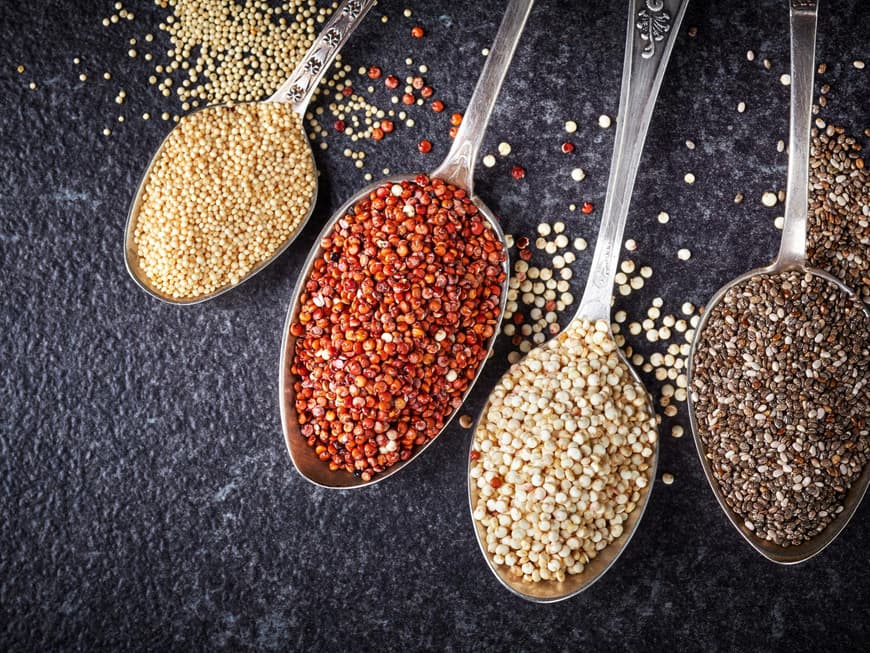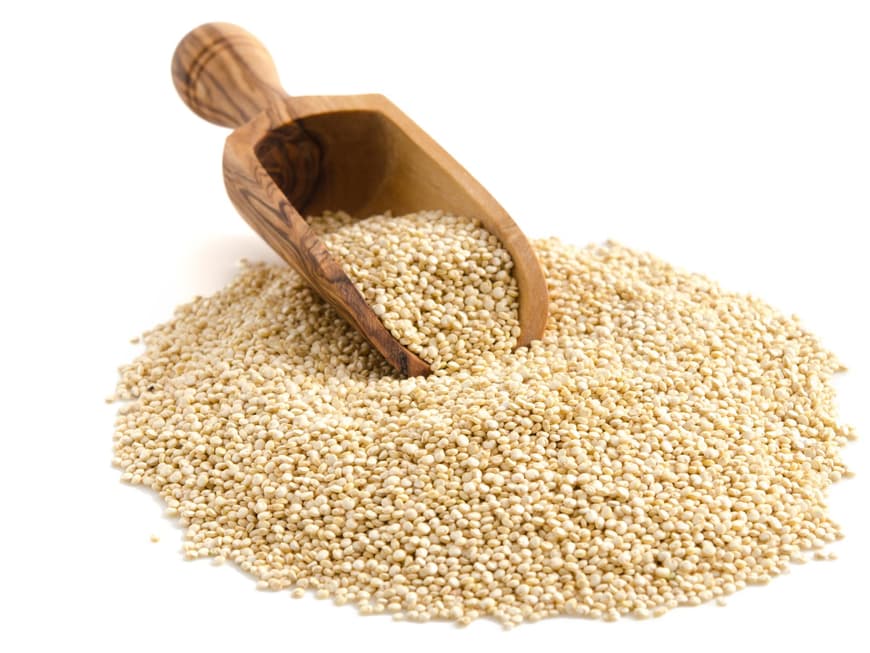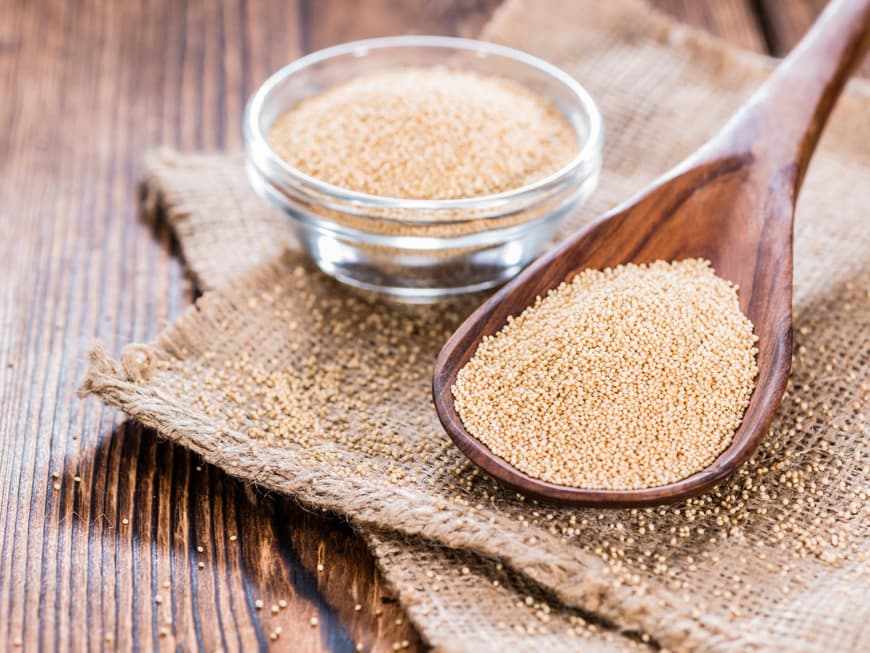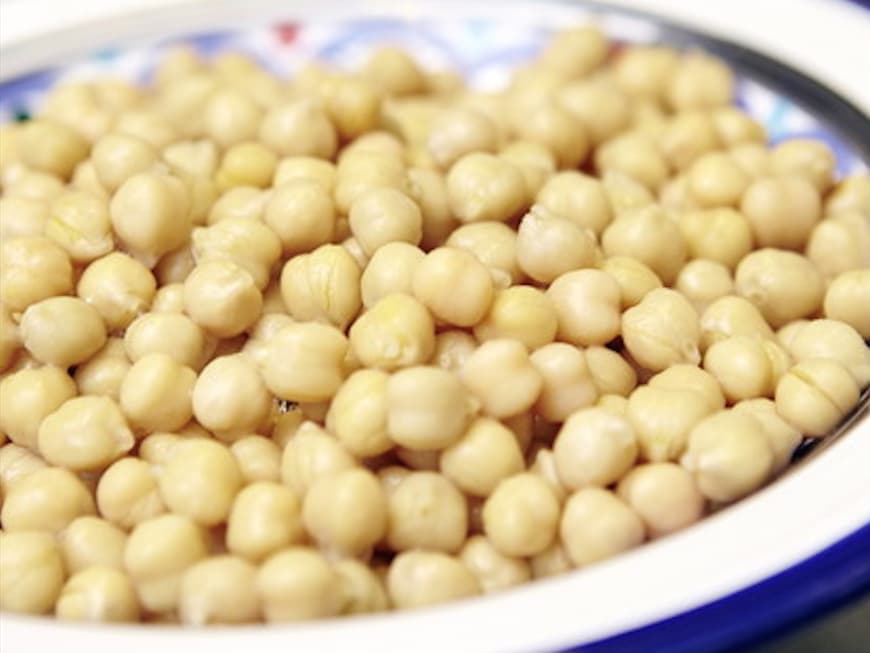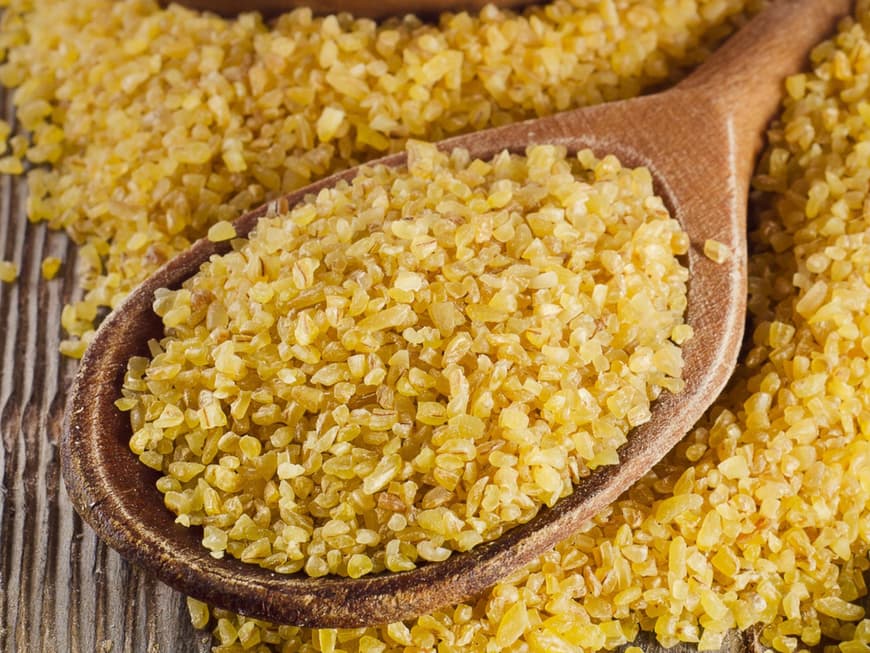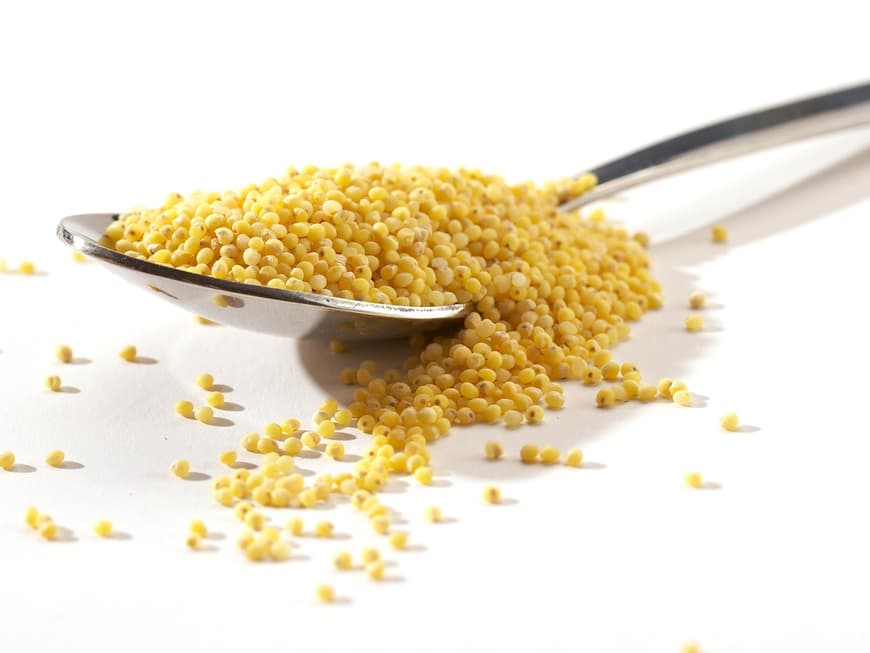Quinoa
This trendy grain is very rich in minerals and has a particularly high protein content. This makes it particularly popular with people who pay attention to a balanced diet. Quinoa (also known as "Inca rice" or "Andean millet") is ideal for gluten-free food preparation. As the seeds are also completely alkaline, they are great for combating hyperacidity and support sustainable weight loss.
Amaranth
These tiny grains are still relatively unknown. They are also available puffed. This tastes fantastic in muesli or baked goods. In wholefood cuisine, amaranth is prized for its high nutritional value. The gluten-free seeds (not a grain!) are particularly rich in protein (18%), followed by magnesium, calcium and iron. And amaranth contains 70% unsaturated fatty acids, which are good for cholesterol levels.
Couscous
Small balls that can be prepared in no time at all. Simply pour boiling water over them and leave to swell for a few minutes. It couldn't be quicker! Couscous originated in the north of Africa. Its slightly nutty flavor makes it delicious with fish and meat, as a filling in eggplants and peppers, as a vegetarian patty or in salads and soups. It is also suitable for preparing low-fat, high-fiber desserts, e.g. with milk, raisins, roasted almonds and cinnamon. However, anyone who suffers from gluten sensitivity should avoid couscous.
Bulgur
Durum wheat groats are a staple food in oriental cuisine in particular, but they are also being used more and more frequently here. As it has already been steamed during production, it only needs to be soaked briefly in water when cooking. The nutrient-rich semolina contains large amounts of vitamins B and E as well as calcium, magnesium and phosphorus. However, as a wheat product, it is not gluten-free. However, it is well suited to a diet, as its high fiber content keeps you full for a long time.
Millet
This nutty-tasting grain is gluten-free, making it easy to digest and safe to eat for coeliacs. Millet is bursting with silicon, iron and magnesium. It strengthens bones and joints and beautifies skin, hair and nails. The iron it contains is best absorbed with vitamin C. Peppers, lemon & co. are therefore ideal as an ingredient. Cooked millet can also be used as a tasty soup garnish when formed into small dumplings. Combined with fruit, it makes a healthy dessert.
And here are a few delicious recipes on the subject:
Couscous and vegetable salad with cucumber, tomatoes and mint
Stuffed chicken breast in a bed of couscous

